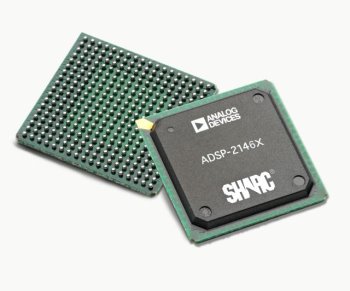Itanium (pronounced /aɪˈteɪniəm/, eye-TAY-nee-əm) is a family of 64-bit Intel microprocessors that implement the Intel Itanium architecture (formerly called IA-64). The processors are marketed for use in enterprise servers and high-performance computing systems. The architecture originated at Hewlett-Packard (HP), and was later jointly developed by HP and Intel. Intended to push performance beyond existing designs, Itanium departed dramatically from Intel's legacy x86 and other architectures. The Itanium architecture is based on explicit instruction-level parallelism, in which the compiler makes the decisions about which instructions to execute in parallel. By contrast, other superscalar architectures depend on elaborate processor circuitry to keep track of instruction dependencies during runtime

Internal Cicuit of Itanium

Core 2 is a brand encompassing a range of Intel's consumer 64-bit x86-64 single-, dual-, and quad-core CPUs based on the Intel Core microarchitecture. The single- and dual-core models are single-die, whereas the quad-core models comprise two dies, each containing two cores, packaged in a multi-chip module.[1] The introduction of Core 2 relegated the Pentium brand to the mid-range market, and reunified laptop and desktop CPU lines, which previously had been divided into the Pentium 4, Pentium D, and Pentium M brands. The Core microarchitecture returned to lower clock rates and improved the usage of both available clock cycles and power when compared with the preceding NetBurst microarchitecture of the Pentium 4/D-branded CPUs.[2] The Core microarchitecture provides more efficient decoding stages, execution units, caches, and buses, reducing the power consumption of Core 2-branded CPUs while increasing their processing capacity. Intel's CPUs have varied wildly in power consumption according to clock rate, architecture, and semiconductor process, shown in theCPU power dissipation tables

Another Intel Processor for Pentium 4

Advanced Micro Devices AMD
, Inc. (AMD) is an American multinational semiconductor company based in Sunnyvale, California, that develops computer processors and related technologies for commercial and consumer markets. Its main products includemicroprocessors, motherboard chipsets, embedded processors and graphics processors for servers, workstations and personal computers, and processor technologies for handheld devices, digital television, automobiles, game consoles, and other embedded systemsapplications.

International Business Machines IBM
(NYSE: abbreviated IBM, is a multinational computer, technology and IT consulting corporation headquartered in Armonk, North Castle, New York, United States. The company is one of the few information technology companies with a continuous history dating back to the 19th century. IBM manufactures and sells computer hardware and software (with a focus on the latter), and offers infrastructure services, hosting services, and consulting services in areas ranging from mainframe computers to nanotechnology. It has been nicknamed "Big Blue" for its official corporate color

PowerPC
(short for Performance Optimization With Enhanced RISC – Performance Computing, sometimes abbreviated as PPC) is a RISCarchitecture created by the 1991 Apple–IBM–Motorola alliance, known as AIM. PowerPC, as an evolving instruction set, has since 2006 been renamed Power ISA but lives on as a legacy trademark for some implementations of Power Architecture based processors.
Originally intended for personal computers, PowerPC CPUs have since become popular embedded and high-performance processors. PowerPC was the cornerstone of AIM's PReP and Common Hardware Reference Platform initiatives in the 1990s and while the architecture is well known for being used by Apple's Macintosh lines from 1994 to 2006 (before Apple's transition to Intel), its use in video game consoles and embedded applications far exceeded Apple's use.
PowerPC is largely based on IBM's earlier POWER architecture, and retains a high level of compatibility with it; the architectures have remained close enough that the same programs and operating systems will run on both if some care is taken in preparation; newer chips in the POWER series implement the full PowerPC instruction set.

PARC (from Scalable Processor Architecture) is a RISC instruction set architecture (ISA) developed by Sun Microsystems and introduced in 1986. SPARC is a registered trademark of SPARC International, Inc., an organization established in 1989 to promote the SPARC architecture and to provide conformance testing. Implementations of the original 32-bit SPARC architecture were initially designed and used for Sun's Sun-4workstation and server systems, replacing their earlier Sun-3 systems based on the Motorola 68000 family of processors. Later, SPARC processors were used in SMP servers produced by Sun Microsystems, Solbourne and Fujitsu, among others and designed for 64-bit operation.

Texas Instruments
Widely known as TI, is an American company based in Dallas, Texas, United States,renowned for developing and commercializing semiconductor and computer technology. TI is the No. 4 manufacturer of semiconductors worldwide after Intel, Samsung and Toshiba, and is the No. 2 supplier of chips for cellular handsets after Qualcomm, and the No. 1 producer of digital signal processors (DSPs) and analog semiconductors, among a wide range of other semiconductor products. Due to very early understanding of the Internet back in spring 1986, the company was the 13th firm to register its domain name, the famous . It is one of the 58 global brands to be in the Internet Hall of Fame owning a two letter domain name. As of 2009, the company was listed at number 215 on the Fortune 500.

Analog Devices Inc

Model ADSP

ANALOG DEVICES INC ANOTHER PROCESSOR BLACKFINN
